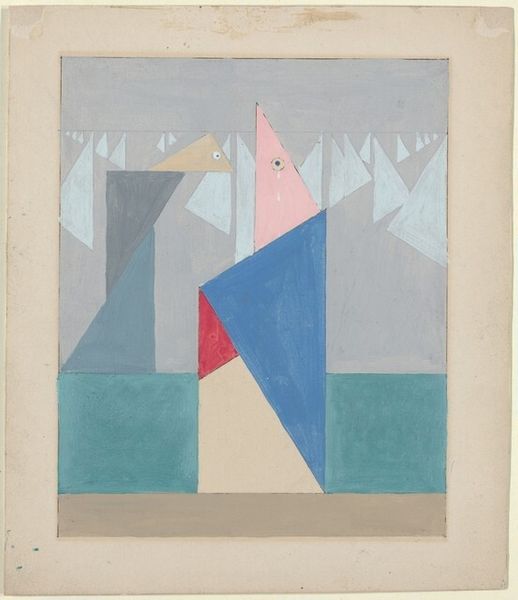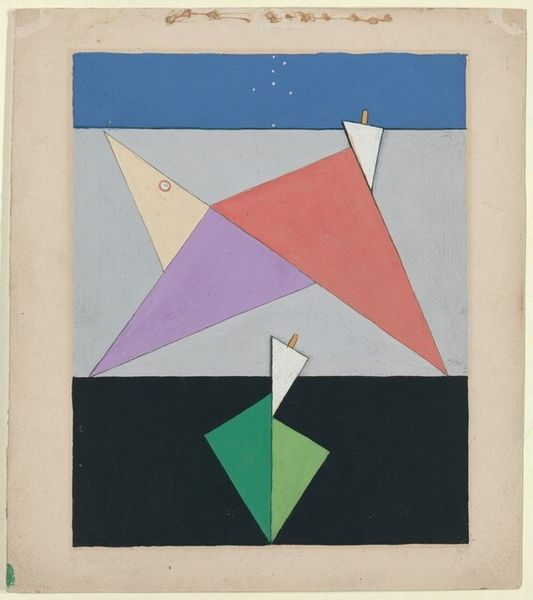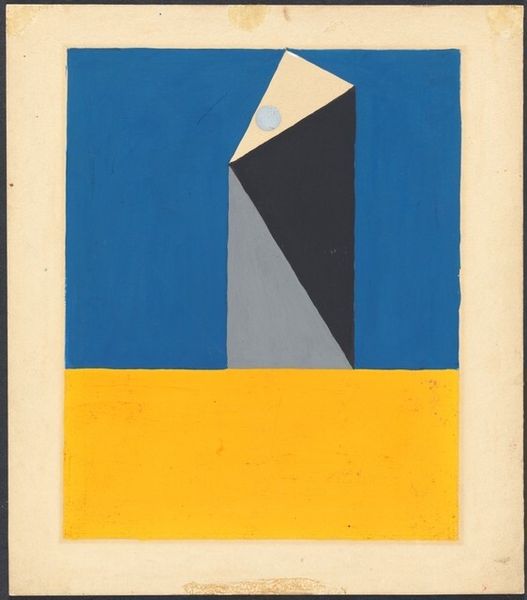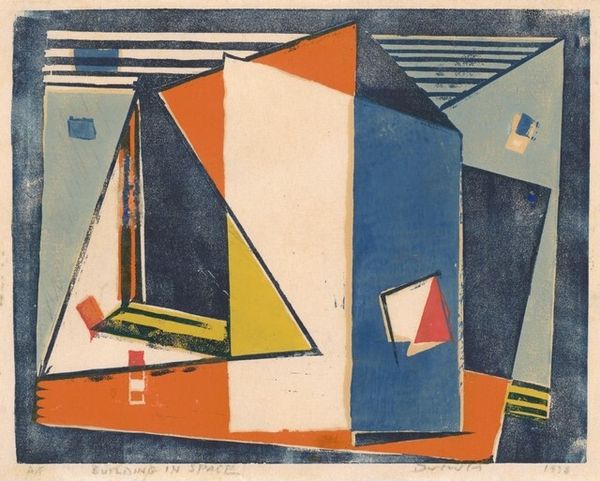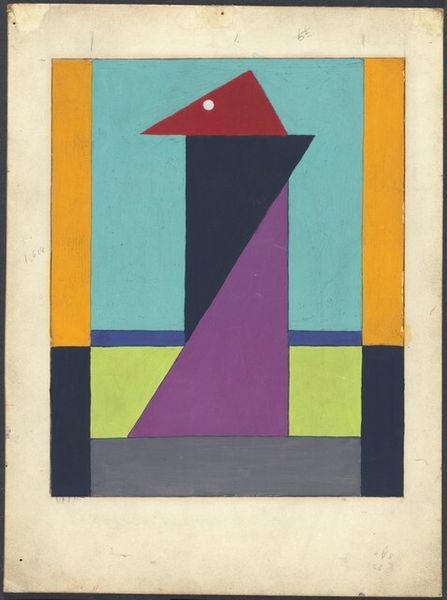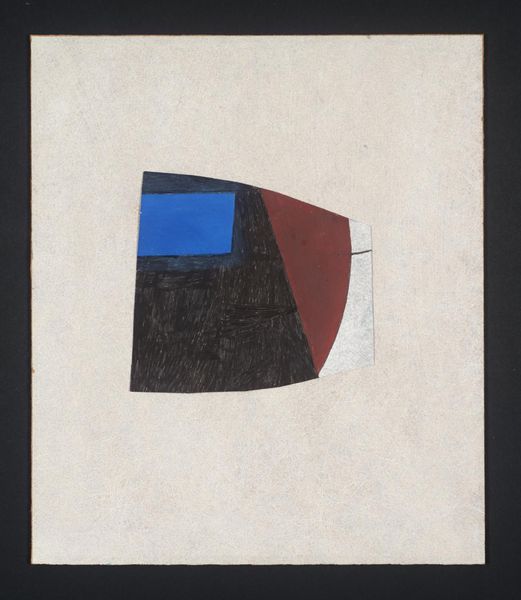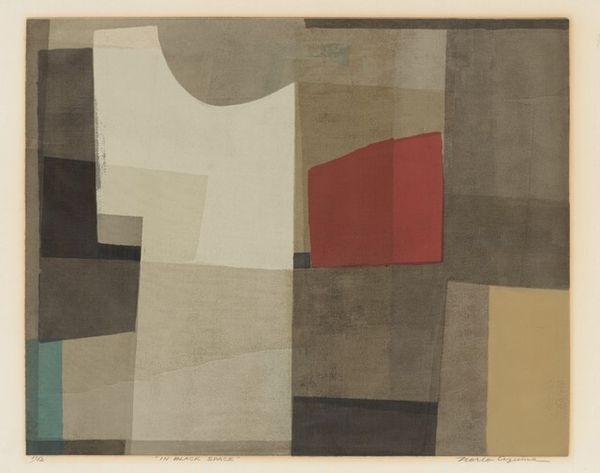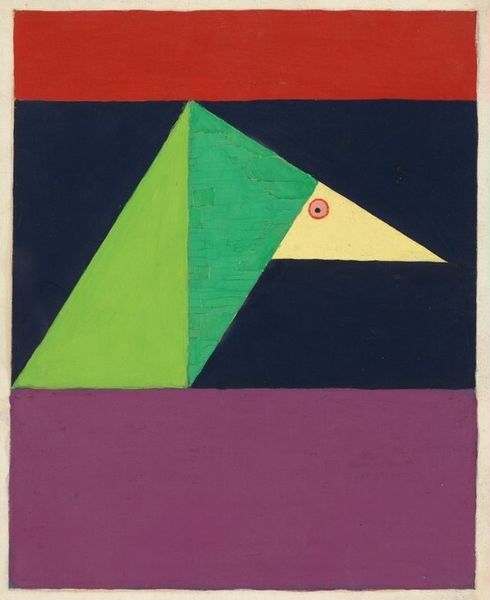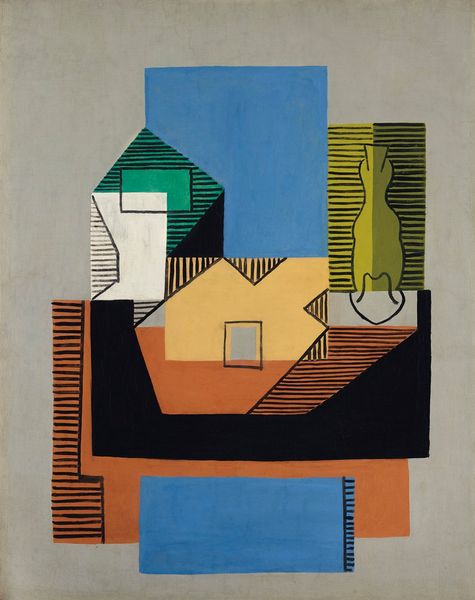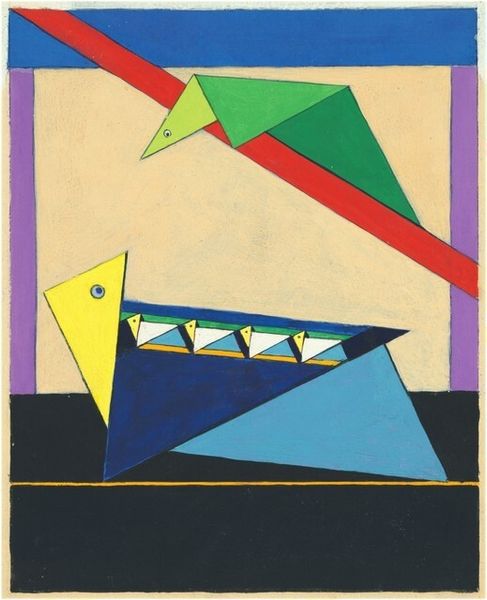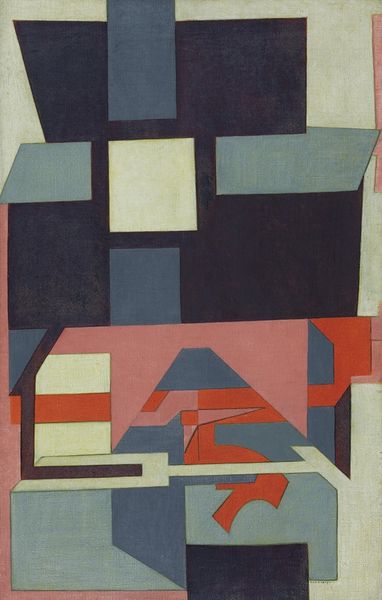
The Pup-Who-Sacrificed-a-Piece-of-His-Head-So-He'd-Have-a-Tail-to-Wag c. 1922
0:00
0:00
drawing, watercolor
#
drawing
#
water colours
#
watercolor
#
geometric
#
abstraction
#
watercolor
Dimensions: image: 20 x 16.19 cm (7 7/8 x 6 3/8 in.) sheet: 24.13 x 20.96 cm (9 1/2 x 8 1/4 in.)
Copyright: National Gallery of Art: CC0 1.0
Editor: This is Edward Steichen’s "The Pup-Who-Sacrificed-a-Piece-of-His-Head-So-He'd-Have-a-Tail-to-Wag," made around 1922 using watercolor. The shapes and colors are really striking... It's playful but also quite stark. What's your interpretation of this interesting watercolor? Curator: The means of production here are intriguing. It appears Steichen used fairly commonplace watercolor paints, applying them in a very deliberate way to subvert our expectations. The geometric shapes, particularly the triangles and rectangles, feel mass-produced and machine-like rather than organic. He has, in a very real way, flattened a being—the pup. And the title’s playful sacrifice belies the real economic anxieties playing out at the time; it raises the question: who is making this sacrifice and what are the material costs of this wagging tail? Editor: So you’re saying that this piece challenges our expectations of what materials can represent, and how the idea of 'sacrifice' isn't just abstract? Curator: Exactly. Watercolors are usually associated with delicate landscapes or portraits. Here, they're used to construct something almost industrial, and somewhat sarcastic. Note how the watercolor sits thickly, opaquely on the page – negating the transparent wash we expect. What kind of commentary can we make around labor when something ‘handmade’ is stripped of its skill and made ‘common’? And note the presence of a ‘signature’ along the border - stamped like an industrial approval? Editor: That’s fascinating. I was focusing so much on the visual impact, I missed the material conversation. I see what you mean about labor being present (or absent) here. It shifts my whole perspective. Curator: By looking at art through its process and materials, we often find these conversations are much richer and more nuanced than expected. Hopefully this has shed new light on materiality, technique and labor within this small but potent watercolor by Steichen.
Comments
No comments
Be the first to comment and join the conversation on the ultimate creative platform.
